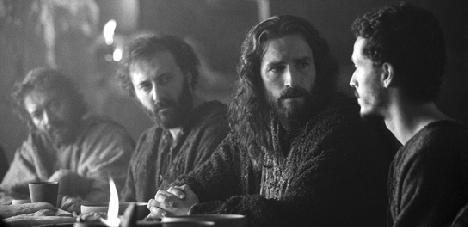 KRT Campus
KRT Campus“The Passion of Christ” finally arrived in theaters Wednesday, Feb. 25, and it is worth paying $7 to enjoy every riveting minute.
People now have a chance to see what this controversial film is all about, instead of entrusting the judgment to critics.
The film generated a buzz long before its release. It was controversy incarnate.
People accused the film of promoting anti-Semitism. People said it was too graphic and gruesome, and that it was Mel Gibson’s way of trying to stir up feelings about a subject that no one seems to want to discuss – religion.
In today’s society, producing a film about Jesus Christ is a bold move. Gibson, who directed and produced the film and wrote the screenplay, took that chance and, in the end, produced one of the most passionate, thought provoking films I have ever seen.
Gibson, with the help of Benedict Fitzgerald, adapted the movie from four books in the Bible: Matthew, Mark, Luke and John.
The film chronicles the last 12 hours of Jesus’ life.
It was filmed in Italy, but the most amazing aspect is that not one word of English is spoken in the film: all dialogue takes place in Aramaic and Latin.
But don’t let subtitles hold you back from seeing this astounding movie. Not using English only adds to the power of the affair on screen.
James Caviezel (“Frequency,” “The Thin Red Line”) portrays Jesus in the film. Interestingly, an article in the Post stated that Caviezel had always wanted to play comedic roles.
This role was anything but comedic. Yet the seriousness and sensitivity of the role did not to hold Caviezel back from performing with an intensity that went unparalelled.
He speaks little throughout the film, but no articulation of speech is needed to reveal the depth of his emotions. His eyes burn through your soul, empowering you to embrace whatever belief you may hold.
Even when he is beaten and turned into a blood-cloaked martyr, those eyes still speak their will and call you to him.
I cannot deny that the film is extremely gory.
Your stomach will churn as Jesus is bloodied and crucified, but it is necessary to make you understand what Christ did for his followers. No other movie has portrayed his sacrifice so convincingly.
The film leaves the audience drained of emotions with its touching interpretation of Christ’s death.
The goriness of the film is balanced with flashbacks of Christ’s life.
Even while Jesus is being crucified (which is shown in its entirety, including the nails being pounded into his hands and feet), Gibson takes some of the strain of the graphic death by revealing how Christ lived.
It only gives the audience a reason to love him more.
Even with the flashbacks, audience members could be seen lowering their heads and wiping their eyes.
While the story itself was the tear-jerker, the music was the perfect complement. Gibson uses instrumental music to stir your bones while the story unfolds before your eyes.
Without the music, “The Passion of Christ” would not have been as rich an interpretation of Jesus’ last days on earth.
The one part I did not enjoy was the incorporation of Satan. Throughout the film Satan could be seen walking through the crowd. I felt it unnecessary to constantly see this character.
Seeing Satan everywhere made me think, at one point, that this was a movie for Hollywood, not, as Gibson has said, for himself.
In the end, “The Passion of the Christ” is one of the most poignant and powerful movies ever shown on the big screen.
Not because it’s about religion, simply because it is a wonderful movie.

